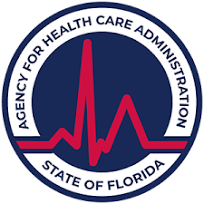Post-traumatic stress disorder, often shortened to PTSD, is an anxiety disorder that impacts an estimated 6.8% of Americans at some point in their lives. Degrees of impairment range from mild to serious, meaning that a person may function well or struggle a significant portion of the time. Today, in recognition of PTSD Awareness Month, we would like to discuss this disorder and its treatment.
What Does PTSD Look Like?
PTSD is your body’s response to a traumatic event. While it’s usually associated with military service, many individuals will experience trauma unrelated to combat. If you are in a car accident, have been assaulted, or live through a natural disaster, you may develop PTSD. While your brain’s new defenses are meant to protect you, they may actually sabotage your quality of life.
Those with PTSD look like everyone else; however, their lives are much more difficult. They may be plagued with strong emotions, including powerful responses to triggering people, places, or things. These feelings, combined with heightened anxiety and flashbacks, can result in the traumatized individual feeling estranged from others. They may also begin to isolate themselves in an effort to manage their symptoms.
Trauma Among Women
In surveys of both adolescents and adults, PTSD was found to be more common among women. One study of past-year prevalence found that 5.2% of female respondents reported PTSD symptoms within the year, while only 1.8% of male respondents experienced these issues. A diagnostic interview of adolescents revealed an even more obvious gender gap: 8.0% of female teens surveyed had some experience with this disorder during their lives, compared to 2.3% of male teens.
While men are more likely to experience trauma, women are more likely to develop post-traumatic stress disorder as a result. Researchers from the National Center for PTSD believe that women experience this anxiety disorder at higher rates because:
- Women tend to blame themselves for traumatic experiences more often than men.
- One in three women will experience sexual assault, which is more likely to result in PTSD.
- Women are more likely to experience childhood abuse or neglect.
- Rates of domestic abuse are higher for women.
- Women are more likely to suddenly lose a loved one.
What Causes PTSD?
Many major life events can result in PTSD. Not everyone who experiences the below will develop a disorder; those at higher risk are people with co-occurring mental illnesses, who lack social support, and who had a severe reaction at the time.
Common causes of PTSD include:
- Growing up in poverty
- The death of a loved one
- Domestic violence, emotional abuse
- Serious illness resulting in hospitalization
- Near-death experiences
- Natural disasters
- Living around someone with an addiction
- Major injury, especially one requiring a long recuperation period
- The end of a major relationship, divorce
- Sexual assault
- Neglect or abandonment
PTSD Symptoms
There are four major categories of PTSD symptoms. Those who have lived through a traumatic event (or ongoing traumatic circumstances) may experience the below in varying degrees of severity. The symptoms of PTSD include:
Heightened Arousal and Reactivity
Irritability, angry outbursts, self-destructive behavior, exaggerated startle responses, difficulty concentrating, watchfulness, and sleep problems.
Changes to Cognition and Mood
Difficulty remembering the event, distorted beliefs and ideas, poor self-esteem, allocating blame, lessened interest in favorite activities, estrangement and detachment, anhedonia (lack of positive emotions)
Intrusive Thoughts
Unwanted, upsetting memories and flashbacks of the event. These may be so realistic that it feels as though a person is really reliving the moment.
Avoidance
Staying away from reminders of the traumatic event, even if it sabotages one’s lifestyle. Avoiding remembering, discussing, or reflecting on what happened.
Effective Trauma Treatment in North Florida
If any of the above PTSD symptoms sound familiar to you, it is important to seek treatment sooner rather than later. Fortunately, there are several effective treatments available for this mental health condition. At Augustine Recovery, we offer an array of proven therapeutic methods for trauma treatment, including cognitive-behavioral therapy, process groups, 12-Step meetings, and EMDR therapy. Through evidence-based care, it is possible to reduce post-traumatic stress disorder symptoms and make a full recovery.
For more information about trauma treatment in Florida, contact Augustine Recovery today.





